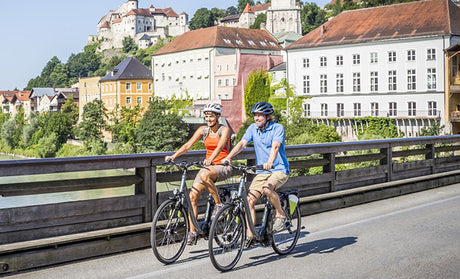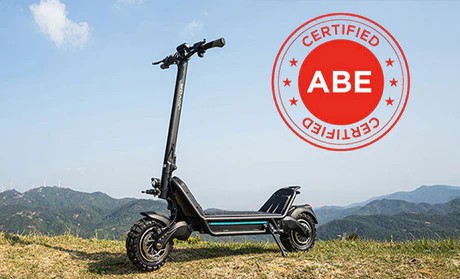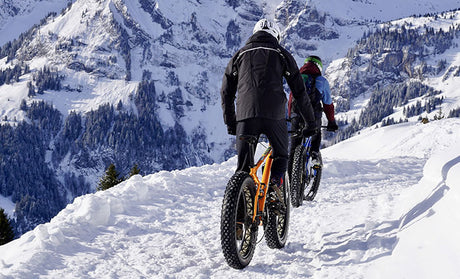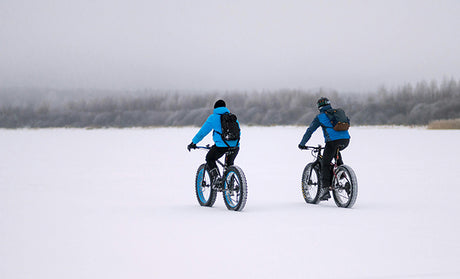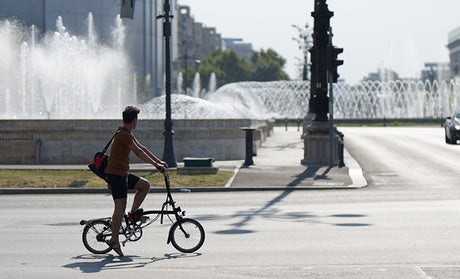Cycling is all about fun, whether you do it for a leisure activity or a professional race. It is a great way to experience new cities and socialise with new people.
Still cycling is a demanding sport, you should be well-equipped and wear the right outfit including jerseys. A good cycling jersey often comes with a comfortable design that is breathable, and easy to move in. Additionally, it gives you protection in hot weather from UV radiation as well as the case of a fall off the bike.
However, it may be overwhelming heading to the world of cycling jerseys with the wide range of products. If you don't know where to start, then go through today's post and consider the top 6 things to make everything easy to pick the right cycling jersey.

Materials or Fabric
A decent jersey should fit you comfortably, wick away moisture, and keep you ventilated through your riding.
Most cycling jerseys are made from synthetic fibres that are planned to be breathable and drain away perspiration to keep the wearer cool and comfortable. They also come with an ergonomic cut to make sure you're comfortable while riding.
What kind of fabric your jersey is designed for should depend on the riding conditions. Leaning on when and where you will be riding, consider those with water resistance, wind protection, and breathability. While preferring natural fibres, look out for bike jerseys produced from merino wool, as these are wicking and also stay warm when moist. Additionally, Merino wool has a built-in resistance to odour, making it an excellent base layer for rides where you might need to wear the same jersey several days in a row. Oolactive's cycling jersey is a great choice, generally made of high-quality polyester and spandex, with breathable, sweat-wicking, and comfortable features to keep you cool and ventilated while riding.

Countries with high temperatures where it's hot most of the time, a decent summer-specific cycling jersey is crucial. These jerseys often have a mesh fabric that is quite breathable and keeps you ventilated and cool. Due to the inherent thinness of these fabrics, long rides may raise your chance of sunburn. You might also wish to consider a jersey that provides a high level of UV protection.
Long Sleeves vs. Short Sleeves
If you don't only bike in hot weather, you'll likely need a few long-sleeve jerseys and a few short-sleeve ones. Everything depends on the surroundings' temperature where you are riding. The determining temperature for most people is between 50°F and 60°F.
Keep in mind that it's often preferable to start a little cold; you'll make a head up after the initial uphill climb. If it's still too chilly, think about wearing a short-sleeve jersey with arm warmers. You may simply take off the warmers and put them in your back pockets if it gets warm.
If it's cooler outside and you're riding, you might want to wear a bike jacket or a heavier long-sleeve jersey. If you're in an area where summers are usually hot and you don't want to wear long-sleeved jerseys, you may want a pair of cool ice silk arm sleeves, which are very comfortable and keep your arms cool without compromising Can get sunburned by UV rays.
Size Fit
Depending on the style of riding you're aiming for, cycling jerseys also come in a variety of fit formats. So, you should think about your riding style when choosing jerseys. There are a few common fit options on the market, including race fit, which is often snug-fitting, aerodynamic, and high performance; regular fit, which is slightly roomier and prioritises comfort over performance; and comfort fit, which is the best option for recreational riders.
If you want a ride that is performance-oriented, snug-fit would be the best choice for you. These jerseys improve your ability to wick sweat and increase your aerodynamics compared to other jerseys. It feels almost as though you are not wearing anything because there is less flapping.
A loose-fitting jersey will do if you want something more forgiving. You could feel less self-conscious wearing a looser fit on rides with other people where you'll be stopping for coffee.
Link to oolactive cycling jersey and short pants size guide>>
The cut of the majority of cycling jerseys is tailored to your position while riding. Therefore, when you get off the bike, it could appear a little strange or uncomfortable. Most cycling jerseys have longer backs so that your back is protected when you are hunched over on the bike.
Jerseys Zippers
Abruptly, zips play a notable role in jersey design. When getting ready for your ride in the morning, good quality zips not only ensure your sanity but also your ability to effortlessly ventilate yourself while you're out riding all day.
Front zips of various lengths are commonly found on cycling jerseys. The most popular types of zippers are full, quarter, and half-length. These zippers not only make clothing more wearable, but they also help you cool off more quickly by allowing more air to circulate over your upper body.
Back Pockets
As pockets may carry needs, parts, and food on rides, rear pockets come often handy when out on a ride. A well-tailored jersey will include pockets that are deep enough and have nice elastic openings so you can carry more safely. Three pockets are standard on road jerseys. If it's well designed, you'll be surprised at how little you'll notice the items in your back pockets. Conversely, a poorly made jersey causes annoyance throughout a ride since things are constantly shifting around or dropping out.
Design And Colours
A jersey is a must-have item of clothing in cycling and without it, cycling is really uneasy to ride. The most legendary cyclists constantly conjure images of jerseys, teams, designs, and colours. The decision to buy a jersey based on its design is equally crucial as any of the earlier parts. Even if it perfectly fits and protects you, if the design doesn't appeal to you, you won't wear it and will probably wind up keeping it in the bottom drawer.
You should also consider safety when picking a jersey. In addition to making you feel cheerful, colours and designs are preferable for ensuring your visibility on the highways.





